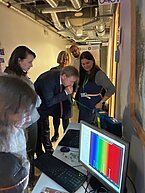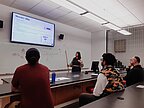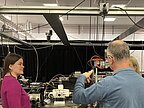
Project title: Heavy metal concentration in precipitation and their impact on the environment
Project number: 1.1.1.9/LZP/1/24/141
Research manager (Postdoctoral fellow): Dr. Anda Ābola
Project partners: none
Project implementation time: 01.03.2025 – 29.02.2028
Total project funding:: 184 140 EUR, including ERDF 156 519 EUR
Aim of the project:
(1) To perform heavy metal - mercury and indium - concentration monitoring in the rainwater, to assess them as a potential pollution source,
(2) To perform spectral diagnostics of indium-containing light sources to optimize them for usage in atomic absorption spectroscopy.
Project results: Scientific publications - 3
Publicity
• COST Action CA20137 VOICES eveny ‘Capacity Building Symposium for Early Carrier Researchers’ Vilnius, Lithuania (03.-04.03.2025)
• 36th International Conference on Phenomena in Ionized Gases (ICPIG) - 20-25 July, 2025, Aix en Provence, France. Poster report on first results published in the conference Abstract book
Researchers' Night 2025 - Do you smell like mercury?
During the event, visitors had the opportunity to see a mercury analyser in action, to determine whether mercury was present in their exhaled air, as well as to learn more about mercury and the importance of measuring its concentration in the environment.
During the demonstrations, the PostDoc project was presented, introducing its objectives and the first results
Mobility to Temple University in Philadelphia, USA (1.10.2025 – 31.10.2025)
The mobility visit took place with the research group on Atoms, Molecules, and Optical Processes, led by Professor A. Marjatta Lyyra at the Department of Physics, Temple University. The visit provided an opportunity to gain insight into the host institution’s theoretical and experimental research activities, to broaden knowledge of optical processes and the practical applications of laser spectroscopy, and to observe ongoing molecular investigations in the laboratory.
As part of the mobility, a presentation was delivered on electrode-less light sources, spectroscopy, and their practical applications in detecting environmental pollution, including the latest results from the PostDoc project

 CONFERENCE
CONFERENCE


